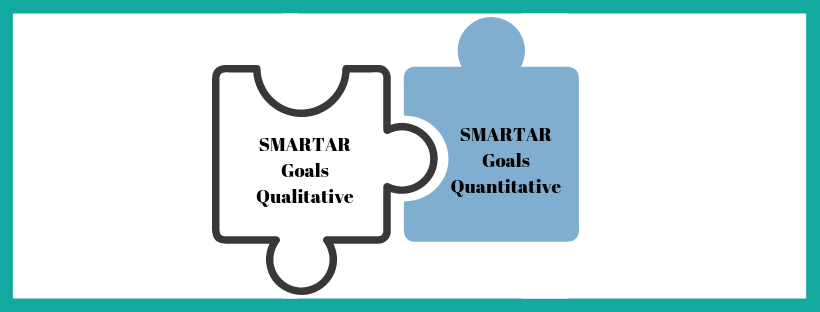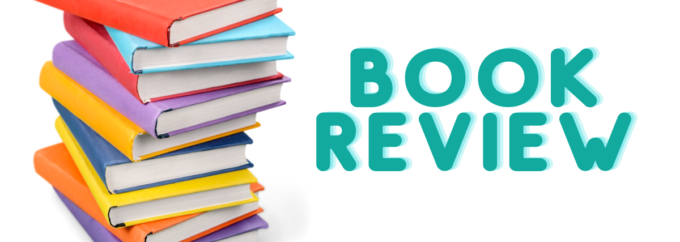Planning is an important part of the educational process. For a student with delays or disabilities, developing an individual learning plan is vital to develop a roadmap so the student can achieve their aspirations for their future. A learning plan is student-centred, identifies appropriate learning goals and describes adaptations to the environment or to teaching methods.
The acronym SMARTAR is used to develop goals in individual learning plans. This acronym can be utilised in two ways. The first approach is where the gaps or deficits in the student’s skills are identified and addressed through explicit teaching. This teaching usually occurs within segregated settings and is based on a quantitative (using numbers/ percentages or statistics) approach. The second approach is based on the Youtube video “See Ya Later SMART Goals’ by Shelley Moore from ‘Five Moore Minutes’. This is an alternative, qualitative (words), strength-based approach where the students’ strengths are identified and built on, and the student learns the skills of self-advocacy and empowerment through the individual education plan process. We will explore the former acronym first.
SMARTAR Goals using a Quantitative Approach
Specific
This section answers ‘what’ the student will be learning and it is the observable behaviour that we want to see. Each goal should be so specific that anyone reading the plan (this could be a relief teacher, assistant or parent) will know if the student has achieved the goal. For example, a goal such as ‘Jake will improve his decoding skills’ isn’t specific enough. Rather, detailed information about what Jake is meant to learn (e.g. the first six sounds in the Jolly Phonics program).
Measurable
In this section we move from ‘what’ to ‘how’. Each goal should specifically state how the skill will be measured. For example Jake’s goal of learning the first six sounds in the Jolly phonics program needs to be measured in some way. For example Jake will state the first six Jolly Phonic sounds when shown flash cards. However, we need more information in this goal to know when it has been achieved. However, we also require information on how the data will be collected (checklist etc) what percentage or accuracy is required.
Action/ Achievable
This section looks at the supports required for the goal to be accomplished. Will the student require verbal or physical prompting? Will they require a cues or a graphic organiser?
Relevant
The goal should be relevant to the student’s needs in the school context and should be individualised. This means that you cannot use the same goal for a number of students in your class and it’s best not to use an IEP goal bank. Rather, each goal should be discussed at the meeting with the student, the student’s parents and stakeholders.
Timed
Each goal should state a specific time frame for the goal to be achieved, for example ‘by the end of Term 1’ or ‘by …….date’. This provides an end goal as progress is tracked along the way.
Agreed Upon
This is the most important part of the individual education plan. Teachers need to be able to demonstrate that they have consulted with the student, parents and outside professionals in order to comply with the Disability Standards for Education (2005). The way this consultation is demonstrated is through the individual learning plan. The plan is a formal document that can be used if there is a dispute over the ‘reasonable adjustments’ that are put in place so the student can access the curriculum. However, the notion of ‘agreed upon’ requires more than legal compliance. There is a large body of literature that states that parents are dissatisfied with the individual planning process, particularly because they do not feel their voice is valued within this process. An example is where the individual education plan is developed by teachers prior to the meeting, suggesting that there is no room for collaboration. Also, parents can be intimidated by professionals in the individual planning process.
Reviewed
The plan requires a date to be reviewed to determine if the goals have been achieved in this time frame. However, the plan should be reviewed sooner if the student is making faster or slower progress than expected.
This approach results in a SMARTAR goal that can be completed using this template:
| By ……………… (when the student will achieve the goal e.g. by the end of Term 1 or by a certain date). |
| The student (replace ‘student’ with their name) will ………(write the specific skill). |
| In……(which setting will this occur? In the classroom? In the playground? During interactions with friends? During math?) |
| As measured by …….(how will the progress be measured? Is it a checklist? Work sample?) |
| With……accuracy (how accurate should the student be for the goal to be considered to be achieved? Is it 5 consecutive data days? Or with 80% accuracy?) |
| With…..supports (is the student independent? Or do they require prompting or visual cues?) |
SMARTAR Goals Using a Qualitative Approach
The following acronym explores the individual planning process from an inclusive, strength-based perspective where the focus is on equity and developing possibilities and aspirations. It provides an alternative means of capturing the progress of students with disability and assessing their growth. This strength-based approach presumes competence of students and acknowledges they are learning, even when this is not captured using quantitative methods. It does not rely on the one form of quantitative data, but rather uses a rich portfolio of work samples that are contributed by the student, family, friends and the teacher. The SMART goals are reframed to be ‘Strength-based. Meaningful, Authentic, Responsive and Triangulated’ resulting in ‘I can ….’ statements as the end result. This approach encourages the student to be empowered and take control of their learning.
Strength-Based
Instead of focussing on remediating the perceived deficits of a student, this qualitative approach builds on the student’s strengths using a ‘funds of knowledge’ approach. This approach is also known as ‘turn-around pedagogies’ and ‘virtual school bags’. For example, a student who enjoys drawing cartoons may be able to utilise this skill to participate in literacy lessons on the class novel. This could be captured in her individual education plan with an ‘I can’ statement such as ‘I can show my understanding of the class novel by creating a cartoon of each chapter’.
Meaningful
The individual education plan should be meaningful to the student and this will assist the student to be engaged, not only in the individual education process, but also with their own learning within the classroom context. Providing the student with a voice during the collaborative and democratic individual planning process will more likely result in a meaningful individual learning plan. This approach is inclusive of parents as research indicates that they have been disenfranchised within the typical individual learning plan process.
Authentic
The learning plan should be authentic in that it addresses real world problems and invites the student to take an active approach in addressing these problems. For example a student who is not socially included by his/her peers could be provided with skills in leadership to assist him/her them to lead a socially valued group within the school context.
Responsive
The learning plan should be responsive to the student’s needs by making connections between the learning plan goals and the student’s culture, heritage and experiences. For example autistic pride could be incorporated into the curriculum for all students as a means of supporting the development of a positive disability identity for a student with autism.
Triangulated
Multiple types of qualitative assessments such as photos, videos, work samples and stories can provide evidence that the goal has been achieved. This type of assessment is much more meaningful than a data tally chart and the student can be in control of collating the evidence.
The end result is a qualitative individual learning plan that has a stronger connection with curriculum goals rather than functional and behavioural goals. It may look something like this:
| Classroom Planning
(Curriculum Goals) |
Individual Learning Plan
(Individual Goals) |
||||||||
| English: Literature
|
English: Literature | ||||||||
| Content Description:
Discuss texts in which characters, events and settings are portrayed in different ways, and speculate on the authors’ reasons.
|
Individual Goal: I can show my understanding of a class novel by drawing a cartoon for each chapter. |
||||||||
| Not Evident | Emerging | Evident | Advanced | Not Evident | Emerging | Evident | Advanced | ||
| Objective:
Understand who the key characters in the novel are. |
Objective: I can draw a cartoon of the main character in the novel. |
||||||||
| Objective:
Understand key events in the novel. |
Objective:
I can draw a cartoon of the main event in the novel.
|
||||||||
| Objective: Understand key settings in the novel. |
Objective:
I can draw a cartoon of the setting in the novel.
|
||||||||
| Classroom Resources:
Novel |
Individual Resources:
Novel, Drawing pad, pencil holder, Assistant
|
||||||||
| Date: | Date: | Date: | Date: | ||||||
| Resources for unit | Individual Supports:
Assistant, AAC |
||||||||
| How will they show their learning? | Evidence:
Work samples Photos Video |
||||||||
| How & when will this unit be reviewed? | Review: | ||||||||
This blog has outlined two approaches to developing an individual education plan. Quantitative approaches are the most common and easily allow for progress to be tracked, but the negative aspects are that it is not inclusive or empowering. Qualitative approaches are more inclusive and empowering as they allow for the development of self-advocacy skills, yet it does not have the rigour of the quantitative approach. Perhaps the best approach is a blend of the two to enable the best of both.





Hi there. Thanks.Useful article!
Thank you.